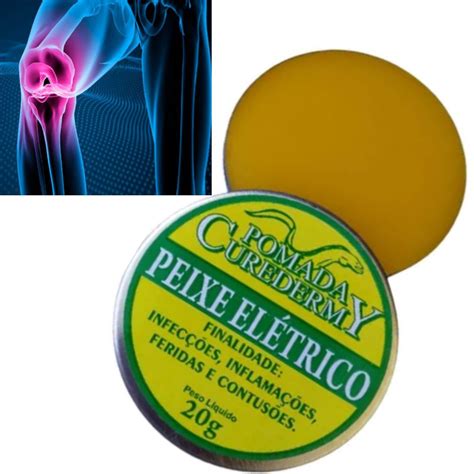10 White Lines Remedies For Better Smile

The quest for a radiant smile is a universal desire, and it’s not uncommon for individuals to encounter issues like white lines on their teeth, which can detract from their confidence in their smile. These white lines, often a result of enamel hypoplasia, fluorosis, or other dental conditions, can appear as discolorations on the teeth. Fortunately, there are several remedies and treatments available to address this issue, ranging from cosmetic procedures to at-home care routines. Here, we’ll delve into 10 potential solutions for reducing the appearance of white lines on teeth, ultimately leading to a healthier and more vibrant smile.
1. Professional Teeth Whitening
For many, professional teeth whitening is the first line of defense against tooth discoloration. This procedure, performed by a dentist, can significantly lighten the teeth, including areas with white lines, helping to create a more uniform color. The effectiveness of professional whitening can vary depending on the severity of the discoloration and the type of whitening used (e.g., in-office laser whitening or custom-fit trays with whitening gel for home use).
2. Dental Veneers
Dental veneers are thin, custom-made shells designed to cover the front of the teeth, making them an excellent option for addressing white lines, especially those caused by enamel hypoplasia or significant discoloration. Veneers are made from porcelain or composite resin and are bonded to the teeth, providing a natural appearance and protecting the tooth surface from further discoloration. While veneers are more expensive than some other treatments, they offer long-lasting results.
3. Dental Bonding
For smaller white lines or spots, dental bonding can be an effective and less invasive solution compared to veneers. This process involves applying a tooth-colored resin material to the affected area and then hardening it with a special light, bonding it to the tooth to improve its appearance. Dental bonding is quicker and less expensive than veneers but may not last as long and can stain over time.
4. Microabrasion
Microabrasion is a conservative treatment approach that involves gently removing a small amount of tooth enamel to reduce the appearance of white lines or spots. This method is often combined with tooth whitening for optimal results. It’s most effective for superficial discolorations and can be an attractive option for those looking to avoid more invasive dental procedures.
5. At-Home Whitening Kits
For those preferring a more affordable, DIY approach, at-home whitening kits can be a viable option. These kits usually include trays or strips coated with a whitening gel. While they may not be as potent as professional whitening treatments, high-quality at-home kits can still help reduce the visibility of white lines, especially when used consistently over time.
6. Enamel Remineralization
For early stages of enamel weakness or the beginning of white line formation, enamel remineralization can help. This process involves using products with fluoride and nano-hydroxyapatite to strengthen tooth enamel. Regular use of a fluoride mouthwash and toothpaste, as well as varnishes applied by a dentist, can help in the remineralization process, potentially reducing the appearance of white lines.
7. Dietary Changes
Diet plays a crucial role in oral health, and making certain dietary changes can help prevent the formation of new white lines. Limiting sugary and acidic foods, which can weaken enamel, and increasing consumption of dairy products and fruits rich in fiber can help protect teeth. Furthermore, staying hydrated helps maintain saliva production, which naturally cleanses and protects the teeth.
8. Regular Dental Check-Ups
Preventive care is key to maintaining a healthy smile. Regular visits to the dentist for check-ups and cleanings can help identify and address issues like white lines early on. Dentists can provide personalized advice on the best course of treatment and offer preventive measures to protect the teeth from further discoloration.
9. Desensitizing Toothpaste
For individuals with sensitive teeth, which can sometimes be associated with white lines due to enamel issues, using a desensitizing toothpaste can help alleviate sensitivity while also helping to reduce the appearance of white lines over time. These toothpastes contain ingredients like potassium nitrate that help block the dentinal tubules in the teeth, reducing sensitivity.
10. Cosmetic Dental Treatments
Beyond the treatments mentioned, there are various cosmetic dental procedures that can address white lines, such as crowns for more severely affected teeth. Each of these options offers a way to improve the appearance of the teeth, but the choice of treatment should be made in consultation with a dental professional to ensure the best outcome for the individual’s specific condition.
Conclusion
Achieving a smile free from distracting white lines is within reach for many, thanks to the array of treatments and remedies available. Whether through professional dental procedures, at-home care, or a combination of both, individuals can find a solution that fits their needs and budget. It’s essential to approach any dental issue with the guidance of a professional to ensure the most effective and safe treatment plan.
Frequently Asked Questions
What causes white lines on teeth?
+White lines on teeth can be caused by several factors, including enamel hypoplasia, fluorosis, and dental trauma. These conditions can result from genetic factors, excessive fluoride exposure during tooth development, or injuries to the teeth.
Are at-home whitening kits effective for reducing white lines?
+At-home whitening kits can be effective for some cases of tooth discoloration but may have limited success with deeper or more pronounced white lines. Professional guidance is recommended to determine the best approach for individual cases.
Can dietary changes help prevent white lines on teeth?
+Yes, dietary changes can play a role in preventing the formation of white lines. Limiting sugary and acidic foods and beverages, and consuming a balanced diet rich in fruits, vegetables, and dairy products, can help support oral health and reduce the risk of enamel issues.
How often should I visit the dentist to prevent or treat white lines?
+Regular dental check-ups are crucial for maintaining good oral health. The American Dental Association recommends visiting the dentist at least twice a year for routine cleanings and examinations. However, individuals with ongoing dental issues, including white lines, may need to visit their dentist more frequently based on their specific needs and treatment plans.
Are there any risks associated with treatments for white lines on teeth?
+Like any dental treatment, there can be risks and side effects associated with procedures for reducing white lines. These can include sensitivity, gum irritation, or the potential for the treatment not fully addressing the issue. It's essential to discuss potential risks and benefits with a dental professional before proceeding with any treatment.
Can white lines on teeth be a sign of an underlying health issue?
+In some cases, white lines on teeth can be indicative of an underlying health issue, such as a developmental condition or exposure to certain substances during tooth formation. A dental professional can evaluate the white lines and provide guidance on whether further medical evaluation is necessary.
By understanding the causes of white lines and exploring the various treatment options available, individuals can take proactive steps towards achieving a brighter, healthier smile. Whether through professional dental care, at-home treatments, or a combination of both, there’s a path forward for those looking to address this common dental concern.


